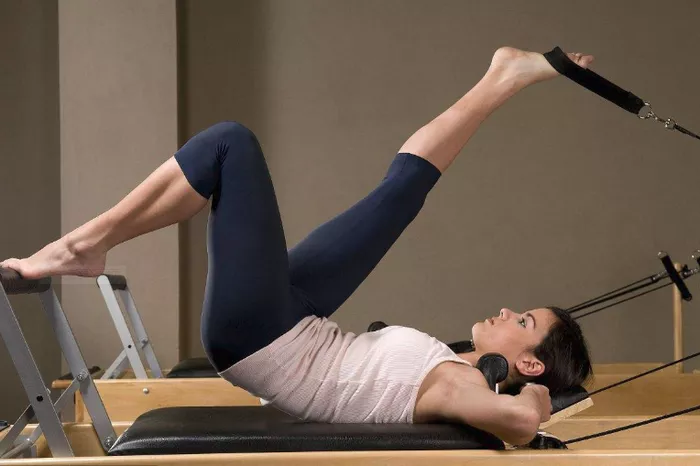Ashtanga Yoga, a time – honored practice hailing from ancient India, is a dynamic and structured system. It is built around a set sequence of asanas (poses) that are seamlessly linked together through vinyasa, a flowing movement synchronized with the breath. The practice typically commences with the Primary Series, known as Yoga Chikitsa, which serves to detoxify and fortify the body. This series includes the iconic Sun Salutations (Surya Namaskar), a sequence of poses that warms up the body, increases blood circulation, and synchronizes the breath with movement.
Understanding the Body’s Rhythms
The menstrual cycle is a natural and complex biological process that occurs in the female body. Spanning approximately 28 to 35 days on average, it is regulated by a delicate interplay of hormones. During the menstrual period, which marks the beginning of the cycle, the body undergoes a series of physical and emotional changes.
Physically, hormonal fluctuations can lead to symptoms such as abdominal cramps, bloating, breast tenderness, and fatigue. The uterus contracts to shed its lining, which can cause discomfort of varying intensities. Emotionally, many women experience mood swings, irritability, or a sense of increased sensitivity. These changes are a normal part of the menstrual cycle and are influenced by the ebb and flow of estrogen and progesterone levels.
Weighing the Pros and Cons of Ashtanga During Menstruation
The Allure of Practice: Potential Benefits
Despite the physical challenges associated with menstruation, practicing Ashtanga Yoga during this time can offer several advantages. One of the primary benefits is pain relief. The gentle stretching and movement in Ashtanga can increase blood circulation to the pelvic area. As blood flow improves, it can help alleviate the intensity of abdominal cramps. Hip – opening poses, such as Baddha Konasana (Bound Angle Pose) and Upavistha Konasana (Wide – legged Forward Bend), are particularly effective. These poses stretch the inner thighs and groin area, releasing tension in the pelvic region.
Moreover, Ashtanga Yoga can have a positive impact on mood. The physical activity stimulates the release of neurotransmitters like serotonin, often referred to as the “feel – good” hormone. Serotonin helps improve mood, reduce anxiety, and promote a sense of well – being. The focus and concentration required during the practice also help calm the mind, diverting attention from negative thoughts and emotions, which are common during menstruation.
The Cautionary Tale: Potential Drawbacks
However, there are also aspects to consider that may pose challenges to practicing Ashtanga on your period. The physically demanding nature of Ashtanga Yoga can be strenuous, especially when the body is already dealing with the symptoms of menstruation. Fatigue is a common complaint during this time, and the high – energy movements and holds in Ashtanga may exacerbate this feeling.
Additionally, hormonal changes can affect the body’s flexibility and strength. Estrogen, which is at a lower level during menstruation, can lead to decreased joint laxity. This means that poses that require a wide range of motion may be more difficult to execute. Progesterone fluctuations can also impact muscle strength, making it potentially more challenging to hold poses that demand significant muscular effort.
Modifying Ashtanga for a Menstrual – Friendly Practice
Pose Adaptations for Comfort
When practicing Ashtanga during your period, it’s crucial to make pose adjustments to ensure comfort and safety. In standing poses like Trikonasana, you can modify the stretch by bending the front knee slightly more. This reduces the intensity on the hips and lower back, which may be more sensitive during menstruation.
In forward bends such as Uttanasana (Standing Forward Bend), keeping the knees bent can relieve pressure on the lower back and hamstrings. For backbends, instead of attempting more advanced poses like Ustrasana, you can opt for supported backbends using props like a wall or blocks. This allows you to experience the benefits of opening the chest and stretching the front of the body without over – stressing the body.
Breath – Centric Adjustments
The breath is the life force of Ashtanga Yoga, and during menstruation, adjusting the breath – linked movements can be beneficial. Slowing down the pace of the Sun Salutations and other vinyasa sequences is advisable. Instead of moving quickly from one pose to the next, take more time to inhale and exhale fully. This slower pace helps you stay more attuned to your body and prevents overexertion.
Focusing on the quality of the breath is also important. Deep, diaphragmatic breathing can help relax the abdominal muscles, potentially reducing cramps. By paying close attention to the breath, you can also maintain a sense of calm and centeredness, which is valuable during a time of hormonal flux.
Frequency and Duration Modifications
Reducing the frequency and duration of your Ashtanga practice during menstruation is often a wise choice. If you typically practice daily, consider cutting back to two or three times a week. Instead of a full – length 60 – minute session, aim for a 30 – minute practice. This gives your body the opportunity to rest and recover while still allowing you to experience the positive effects of the practice.
It’s important to note that these adjustments are highly individualized. Every woman’s body is unique, and you should adjust the frequency and duration based on how you feel. Some women may find that they can tolerate a more regular and longer practice, while others may need more rest.
Mind – Body Connection: The Psychological Aspect
Body Awareness and Self – Care
Practicing Ashtanga Yoga during menstruation provides an opportunity to deepen your body awareness. By paying attention to how your body responds to different poses and movements, you can gain a better understanding of your body’s rhythms and changing needs. You may notice, for example, that certain poses feel more comfortable or challenging on different days of your period.
This heightened body awareness can translate into better self – care. It allows you to make more informed decisions about your yoga practice and overall health. It also encourages a greater sense of respect for your body’s natural processes and a more compassionate approach to yourself during this time.
Mental Resilience and Empowerment
Engaging in Ashtanga Yoga during menstruation can also contribute to mental resilience and empowerment. Despite the physical and emotional challenges, the ability to adapt and modify the practice according to your body’s needs can give you a sense of control. It shows that you are in tune with your body and are capable of making choices that support your well – being.
The mental focus and concentration required in Ashtanga Yoga can also help you develop resilience. By learning to overcome the distractions and discomfort associated with menstruation during your practice, you can transfer these skills to other areas of your life.
Conclusion
In conclusion, the decision of whether to practice Ashtanga on your period is a deeply personal one. It hinges on a multitude of factors, including the intensity of your physical symptoms, your energy levels, and how your body typically responds to the practice. While Ashtanga Yoga is a physically demanding practice, with appropriate modifications, it can be both safe and rewarding to practice during menstruation. Whether you choose to step onto the mat during your period or take a hiatus, the most important thing is to approach your menstrual cycle with self – compassion and a willingness to understand and care for your body’s unique needs.
Related Topics






















